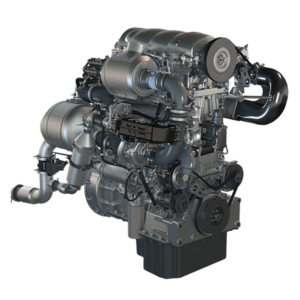Achates Power, the specialist in opposed piston engines, announced that its 10.6 L opposed-piston heavy-duty powertrain has achieved performance results that comply with pending 2027 NOX requirements of the U.S. Environmental Protection Agency (EPA) and the California Air Resources Board. Engine and aftertreatment system development and performance assessments were conducted at the Achates Power facility in San Diego and the Aramco Research Center-Detroit.

The most recent test of the engine, including aftertreatment, measured 0.02 g-bh/hr, demonstrating the capability of the engine to be certified under California’s ultra-low NOx regulation, which requires diesel commercial vehicle engines to reduce NOx by 90% by 2027 to no more than 0.02g bhp/hr over the Federal Test Procedure (FTP) cycle.
Furthermore, Achates said the 10.6L was measured at more than 8% below the current standard of 460 g CO2, exceeding the 2027 EPA regulations of 432 g of CO2 over the Supplemental Emissions Test (SET) cycle. These results were achieved with a conventional, underfloor-only, single Diesel Exhaust Fluid (DEF) injection aftertreatment system.
“These results show that the Opposed-Piston technology is able to meet our sustainable transportation goals, reducing criteria pollutants while also emitting less carbon dioxide,” said David Crompton, president and CEO, Achates Power. “At a time when the industry is contemplating many technology options to address clean energy it’s important to have pragmatic solutions in the conversation that can have more immediate impact, and meeting or beating the most stringent regulations with less cost and complexity and no reliance on enabling infrastructure is compelling.”
The 10.6 L opposed-piston engine was developed as part of a demonstration project, led by CALSTART and funded by CARB, to demonstrate a low CO2, ultralow NOx opposed-piston heavy-duty diesel engine. In addition to CARB, the South Coast Air Quality Management District, the San Joaquin Valley Air Pollution Control District and the Sacramento Metro Air Quality Management District are providing funding for the program.
Originally posted on khl (December 22, 2020) (View original article on khl)
